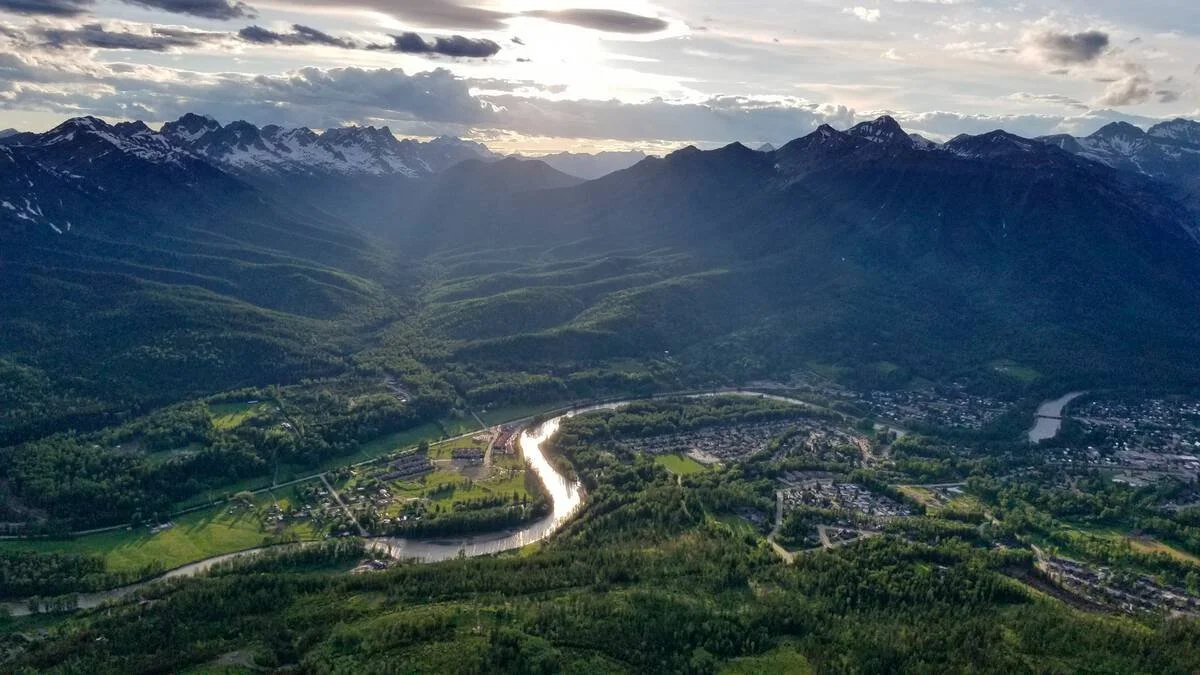Building a better Trout Town. Fernie’s fishing fix
From marketing to maintenance, Tourism Fernie is leading a shift in funding outdoor recreation improvements with visitor dollars
There’s one problem with calling Fernie “Trout Town”. It’s not the trout part: Fernie sits on the Elk River, a world class fly fishing river. And it’s not the town part: it is a charismatic mountain village in the east Kootenays.
The problem is if you’re going to say a town is a world class fishing destination, then it better have the infrastructure to back it up. That hasn’t been the case in Fernie, although that’s changing thanks to the local tourism development organization.
Fernie is the gateway to fishing on the Elk River, a 220-kilometre-long stream of clear and clean trout-rich water. Anglers come from around the region and the world to fish for westslope cutthroat trout and bull trout. But there are only two established boat launches along the entire river.
“The rest are prehistoric in comparison to what you see on most western rivers,” says Paul Samycia, the owner of the Elk River Guiding Company.
For instance, well-known fly fishing rivers over the border in Montana typically have a dozen access points. He has agreements with private land owners to access more of the Elk River, but “the public anglers are stuck on just a couple of sections of river,” he says.
For most of his 25 years of guiding on the Elk, the situation was only getting worse. Three informal launch points disappeared after highway bridges were replaced. Samycia volunteered his own time to try to get new ones built, but he kept getting snagged in bureaucracy and red tape. One approved proposal snapped under public opposition.
Just as he was getting ready to pack up in frustration, Tourism Fernie began untangling the lines. It’s part of a small but growing trend in B.C.’s tourism industry. Destination marketing organizations are recognizing that to create a sustainable adventure tourism industry they need to do more than just encourage more people to come. They also have to provide funding for the outdoor recreation infrastructure.
“Historically there’s been a lack of connection between tourism financing and supporting the system of outdoor groups that build the infrastructure,” says Jikke Gyorki, the executive officer of Tourism Fernie. “We now realize we need to take care of the things we value.”
Traditionally, destination marketing organizations (DMOs), like Tourism Fernie and Destination BC, just focused on getting people to come. In designated resort municipalities, there are 14 of them in B.C., including Fernie, the Resort Municipality Initiative can be used to fund some kinds of new infrastructure projects. But projects have to fit into narrow eligibility criteria, and the Elk River boat launches didn’t qualify.
Public input pushed Tourism Fernie to fill the void. Around 2019, growth in the number of travellers worldwide sparked a push back by residents at the most visited places. The movement coined the term over-tourism and its opposite, regenerative tourism, the idea that visitors should leave a destination better than they found it. (Read our blog post to learn more about regenerative travel in B.C.) The COVID-19 pandemic’s travel restrictions helped propel regenerative tourism into the public consciousness.
Since then, several B.C. tourism marketing organizations have begun to shift their focus from just marketing to steering visitor behaviour, like Tourism Revelstoke’s Sustain the Stoke campaigns, and to build and maintain the outdoor recreation infrastructure they are travelling to use.
As part of the provincial government’s pandemic relief, it created the Tourism Dependent Community Fund, which helped build many new outdoor recreation projects. One was the $851,522 Electrify the Mountain project, an e-mountain bike-focused project in Kimberley that included new trails and charging infrastructure.
On Vancouver Island, 4VI (formerly Tourism Vancouver Island) invested $350,000 on trail developments and renovations at mountain bike networks in Cumberland and Nanaimo.
The New Pathways to Gold Society is working with partners to build and restore 230 kilometres of trails along the historic Cariboo Wagon Road. So far, they’ve worked with the Xatśūll First Nation on trail projects and have spent $600,000 on the Gold Rush Snowmobile Trail between 70 Mile House and Horsefly.
In the Lower Mainland, Destination BC is leading a consortium of communities and organizations in the development of Experience the Fraser, a network of land and river trails that will connect Hope to the Salish Sea. Funding has come from the Ministry of Tourism, Arts, Culture and Sport and from the province’s Targeted Regional Tourism Development Initiative.
Tourism Fernie started its Sustainable Tourism Program after it developed a tourism master plan in 2020. The plan included clear direction from stakeholders and residents that the organization should take a more active role in sustainable tourism efforts, such as recreation amenity and infrastructure development and supporting key recreation assets in the region. Access to the Elk River, for fly fishing, paddling, floating and swimming, was at the top of the list.
“The main thing residents told us is that these places are special and important, but no one is taking care of them,” says Gyorki.
Most river access points were informal. There were no toilets or garbage cans. Parking was chaotic. Erosion was a problem. It was not the experience residents or visitors wanted.
Tourism Fernie set out to improve the situation. With support from various partners, in 2021 Tourism Fernie launched its AmbassadorWILD program to take care of the infrastructure directly. All summer a dedicated team maintains the river access points and trail heads and engages with users to encourage responsible recreation.
At the same time, Tourism Fernie and the Elk River Alliance, a non-profit, launched the Elk River Infrastructure and Amenity Initiative, focusing on building new river access points and improving existing ones. Even with a $300,000 grant from the provincial government, it was more challenging than Gyorki expected. All the informal river access points had different landowners, including BC Hydro, BC Parks, the Ministry of Transportation, and the provincial government, and sometimes multiple owners. Navigating the approval and permitting process was complex and slow. However, as a major organization, backed by local government and businesses, with a paid staff dedicated to the task, it was easier to wade through the bureaucracy than for a volunteer-run club or individual business owner, like Samycia.
In September, the Elk River initiative completed its fifth project, the Elko Boat Launch-Take Out. In total, more than $700,000 has been spent on river projects since 2022. Much of this is covered by a diversity of grants and donations.
“As a DMO, it’s still pretty unique for us to get into this world,” says Gyorki.
Tourism Fernie is not done. There are several other projects in various stages of planning, but, as the fiscal environment tightens, there’s a realization that reinventing the job of a DMO also requires a new funding model. Part of the second phase of Tourism Fernie’s master planning process is to figure out a sustainable and equitable alternative. A way to harness tourism money to support the key tourism infrastructure and natural assets that visitors come to experience, and the locals want to maintain for future generations.
“Who is going to be paying the bills?” Gyorki asks. “I don’t know, but I do know the tourism industry is a partner in figuring it out.”
The upside: the effort benefits everyone.
“More and better access points will help spread people out and create better experiences for tourists and residents,” says Samycia.
And it moves Fernie a little closer to living up to all the aspects of its Trout Town nickname.

